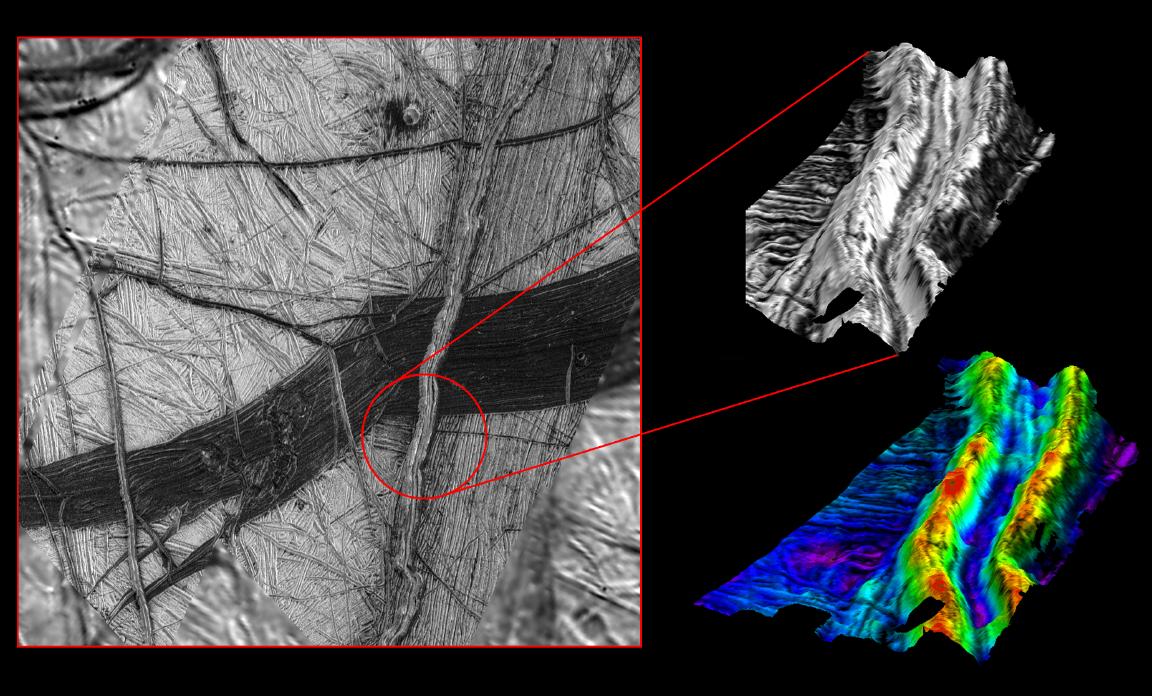All Resources
Three Dimensional View of Double Ridges on Europa

These images reveal the dramatic topography of Europa's icy crust. North is to the right. An east-west running double ridge with a deep intervening trough cuts across older background plains and the darker wedge shaped band. The numerous cracks and bands of such terrain may indicate where the crust has pulled apart and sometimes allowed dark material from beneath the surface to well up and fill the cracks. A computer generated three dimensional perspective (upper right) shows that bright material, probably pure water ice, prevails at the ridge crests and slopes while most dark material (perhaps ice mixed with silicates or hydrated salts) is confined to lower areas such as valley floors. The northernmost (right) slope which faces north, however, has a larger concentration of dark material than south facing slopes. The model on the lower right has been color coded to accentuate elevations. The red tones indicate that the crests of the ridge system reach elevations of more than 330 yards (300 meters) above the surrounding furrowed plains (blue and purple tones). The two ridges are separated by a valley about a mile (1.5 kilometers) wide.
The stereo perspective combines high resolution images obtained from two different viewing angles. Such a three dimensional model is similar to the three dimensional scenes our brains construct when both eyes view something from two angles.
North is to the right, and the Sun illuminates the scene from northwest. The images were taken by the Solid State Imaging (SSI) system on NASA's Galileo spacecraft. The regional context (left), centered at about 16 degrees south latitude, 195 degrees west longitude, was imaged on Nov. 6, 1996 at a range of about 25,500 miles (41,000 kilometers). The higher resolution stereo images were taken on Dec. 16, 1997, at ranges of 3,600 miles (5,800 kilometers) and 1,600 miles (2,600 kilometers) leading to a best resolution of 85 feet (26 meters) per picture element.


